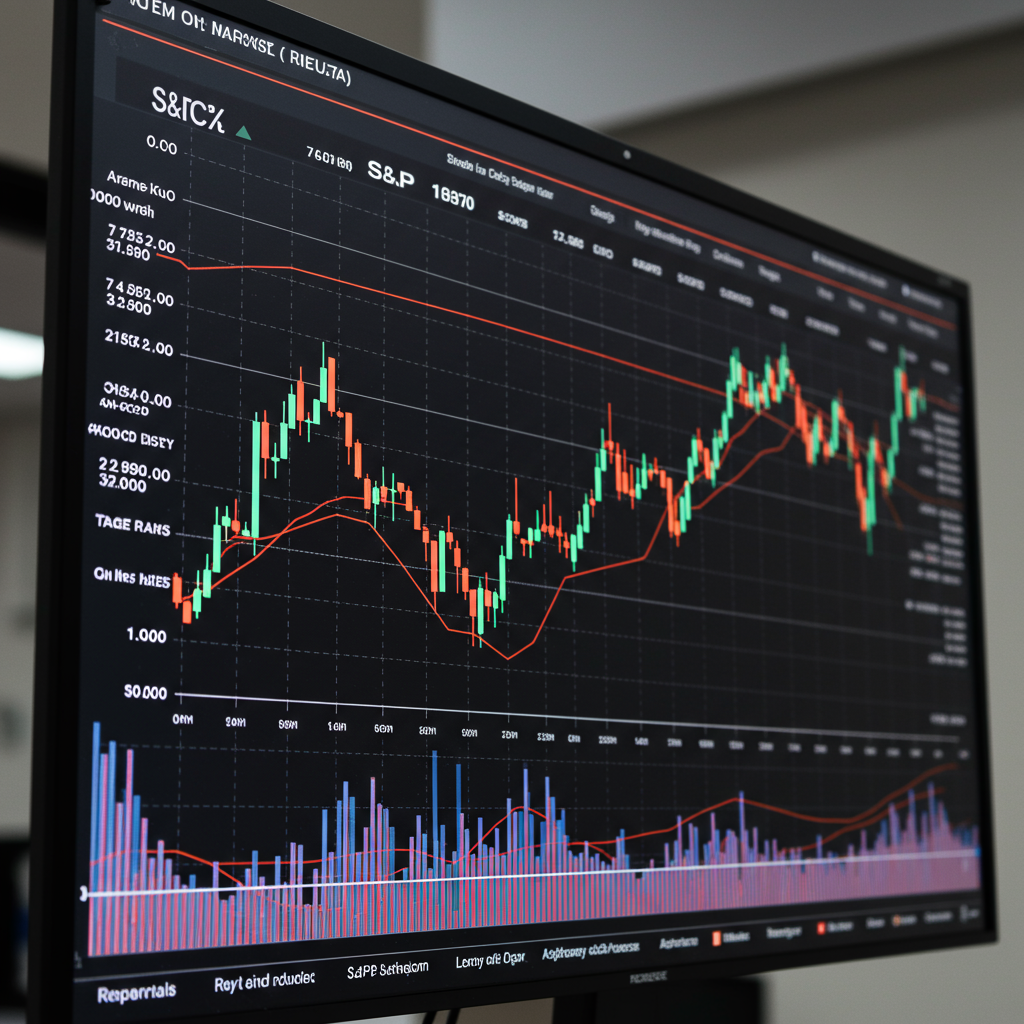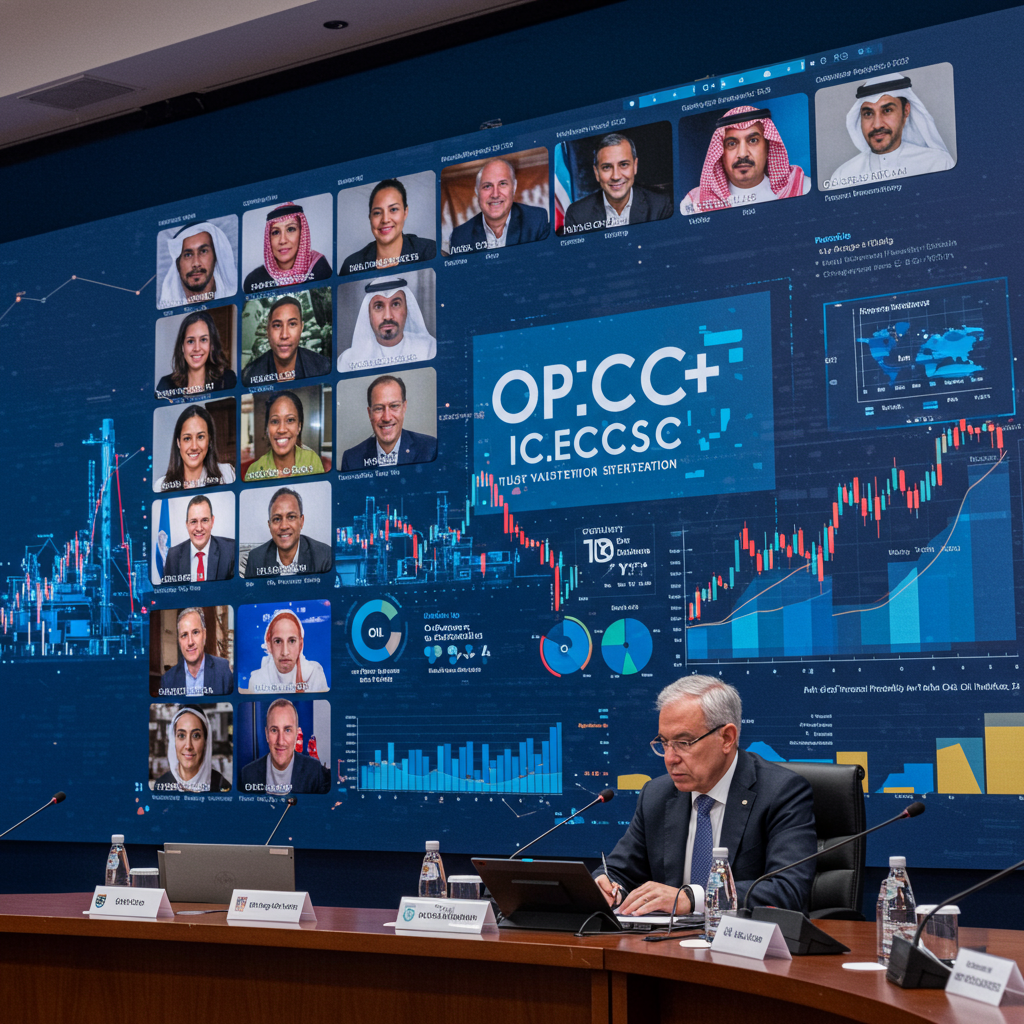US stock futures climbed early Monday, signaling a positive start to the trading week. This upward movement comes as investors react favorably to fresh signs of progress in ongoing international trade negotiations. The optimism surrounding trade talks is adding to the strong sentiment that recently propelled the S&P 500 index to a significant new record high. market participants are watching closely for further developments.
Contracts tied to the broad S&P 500 benchmark showed a gain of 0.4%. Similarly, futures for the technology-focused Nasdaq 100 index rose by 0.6%. This premarket activity suggests potential for markets to extend gains seen at the close of the previous week. Several major technology companies, often referred to as the “Magnificent 7,” saw their shares advance in early trading. Meta Platforms Inc. stood out with a notable 1.8% increase. Meanwhile, the US Treasury market is concluding a strong period. The yield on the 10-year Treasury bond edged lower by three basis points, settling at 4.25%. This marks the Treasury market’s best monthly performance since February, reflecting shifting investor preferences and economic outlooks.
Understanding Why Trade Talks Move Markets
Markets often react strongly to developments in trade negotiations. Positive news typically boosts investor confidence. It can reduce uncertainty about global economic growth and corporate profitability. Companies that rely heavily on international trade, supply chains, or export markets are particularly sensitive to these discussions. Progress in talks can ease concerns about tariffs and trade barriers. This potential for reduced friction creates a more favorable business environment. Conversely, setbacks in negotiations often lead to volatility and risk aversion. The current uptick in futures suggests investors are interpreting the latest signals from the dialogue positively. They hope for a resolution or at least a de-escalation of tensions. This sentiment shift can drive demand for equities. It encourages investors to take on more risk.
Historically, market reactions to trade talks have varied. Periods of optimism have been followed by downturns when progress stalled or tensions re-emerated. The market’s current positive reaction indicates a temporary shake-off of recent cautiousness. Investors recall how past positive steps, like earlier pacts or phone calls between leaders, injected momentum into markets. They are hopeful for a revival of that forward progress. The market seems willing to price in the potential benefits of successful negotiations. This dynamic highlights the significant psychological impact of high-level trade discussions on global financial markets.
Beyond Trade: Other Influences on Investor Sentiment
While trade talks are a primary driver today, several other factors constantly influence market direction. Economic data releases provide crucial insights into the health of the economy. Upcoming reports often fuel anticipation and can cause significant market swings. For example, investors eagerly await key inflation data. The consumer inflation report (CPI) and wholesale inflation report (PPI) are due later this week. These figures offer clues about price pressures and potential central bank policy decisions. Recent data, such as surveys of consumer expectations regarding the labor market and inflation, also shape sentiment. Improved confidence in job security or cooling inflation expectations can underpin market stability.
Corporate news is another major catalyst for stock price movements. Announcements regarding earnings, new products, analyst ratings, mergers and acquisitions, or corporate restructuring can impact individual stocks and sectors. Events like major tech company product reveals or significant analyst downgrades for high-profile stocks demonstrate the power of company-specific news. Initial Public Offerings (IPOs) of large companies can also capture market attention. Even developments in alternative asset classes, such as significant movements in cryptocurrency prices, can sometimes spill over and influence broader market sentiment or related stocks. Market participants constantly weigh this diverse flow of information alongside major geopolitical or trade-related news.
Analyst Outlook and Market Confidence
Wall Street strategists are frequently updating their views on the market landscape. Reports from major investment banks suggest a growing sense of optimism among some analysts regarding the outlook for US stocks. This positive tilt is often linked to signs of economic resilience. Strong economic data, like recent encouraging jobs figures (referencing insights from the external source context on easing recession fears), can reassure analysts. They may conclude that resilient growth is likely to limit any significant market pullbacks. This analyst optimism can reinforce positive market sentiment. It provides further impetus for investors to maintain or increase equity exposure. The combination of potential trade progress and perceived economic strength creates a favorable backdrop. This environment could support continued gains in the near term. Investors monitor these analyst calls closely. They often factor them into their own investment decisions and portfolio positioning.
Navigating the Current Market Environment
The current market environment, characterized by optimism driven by trade talks and supported by underlying economic resilience, presents opportunities and risks. Investors should stay informed about the latest developments in trade negotiations. Monitoring the outcomes of these high-level discussions is crucial. Watching for key economic data releases throughout the week is also essential. These reports could either confirm or challenge the prevailing positive sentiment. Corporate earnings reports and significant company announcements will continue to drive individual stock performance. Diversification remains a key strategy. It helps mitigate risks associated with specific sectors or geopolitical events. Considering investments across different asset classes can also enhance portfolio resilience.
Frequently Asked Questions
What are US stock futures and why are they rising today?
US stock futures are contracts representing the value of major stock indices like the S&P 500 and Nasdaq 100 at a future date. They trade before the main market opens. Their movement provides an early indication of market sentiment. Futures are rising today primarily due to positive developments reported in ongoing international trade talks. This news is boosting investor optimism about economic stability and corporate prospects.
Where can I track the latest updates on trade talks impacting the stock market?
To stay informed about trade talks and their market impact, monitor reputable financial news sources like Bloomberg and Yahoo Finance (as referenced). Follow updates from government officials involved in the negotiations. Watch for news reports from financial news agencies that specialize in real-time market and economic coverage. These sources often provide analysis on how trade developments could affect specific sectors or indices.
Should investors adjust their portfolios based on trade talk news?
Trade talk news can significantly influence market volatility and sentiment. While positive news can create momentum, it’s important not to make impulsive decisions based solely on short-term headlines. Consider trade developments as one factor among many, including economic data, corporate performance, and broader market trends. A long-term investment strategy, often involving diversification and regular portfolio review, is generally recommended over reacting to daily news cycles. Consult a financial advisor for personalized guidance.
Conclusion
US stock futures are showing strength at the start of the week. This advance is largely attributed to renewed optimism surrounding trade talk progress. The positive sentiment follows recent market highs. While trade remains a key focus, investors are also looking ahead to significant economic data releases and monitoring corporate news. The current environment reflects a complex interplay of factors driving market direction. Staying informed and maintaining a strategic approach remains vital for navigating these dynamic conditions.




